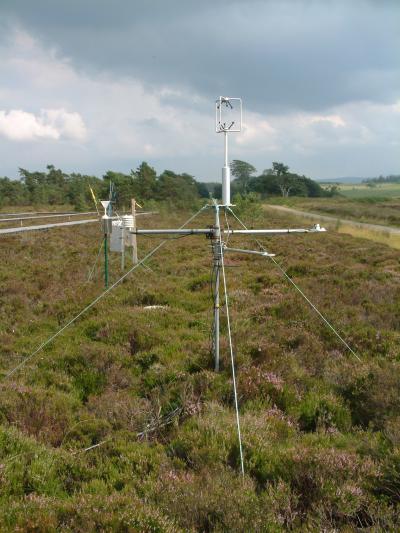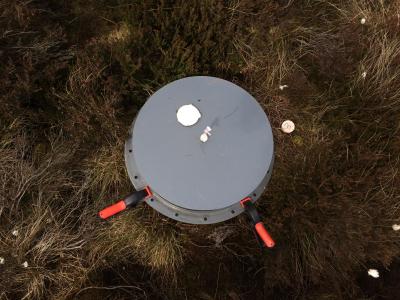Experimental Facilities
- The experiment covers a total area of approximately 2 hectares.
- Long-term exposure to N-deposition treatments on a typical bog community, allowing separate assessment of the impacts of dry-deposited NH3 versus wet-deposited ammonium (NH4+) and nitrate (NO3-).
- Real-world treatment doses and frequencies, coupled to meteorology.
- Possibility to study effects of N-O3 interactions.
- Large 12.5 m2 replicated (4) wet-deposition plots; 60 m long × 10 m wide NH3 gradient.
- Small cabin with workspace and room for equipment. Mains electricity (3-phase) available within the cabin and at various outside locations.
- Track access to the main site hut, with access to treatment plots via boardwalks. Approximately 2 km of boardwalks for access around site.
- Span decks to access plots.
- Internet and phone access.
- Large databases NitroEurope, ÉCLAIRE, ExpeER of above- and below-ground chemistry, species composition and cover, greenhouse gas emissions.
360° virtual tour of Whimbog Site
Equipment/Instruments Available on Site
Automatic weather station
Comprising 2D sonic for wind speed and direction, temperature/relative humidity sensors, rainfall tipping bucket, photosynthetically active radiation (PAR), total solar radiation, soil temperature probe, soil moisture, water table depth (pressure transducer) and wetness sensor.
Hydrology
250 manual dipwells (44 measured monthly).
Flux tower
LI-COR for CH4/H2O fluxes, Campbell for CO2 fluxes plus 3D sonic for wind speed, direction and turbulence
Greenhouse gas measurements
Static chambers for soil/vegetation CH4/ H2O/ CO2/ N2O fluxes, ADC LcPro for portable gas exchange with light and temperature control, PP systems respirometer.
Vegetation
Hansatech handy PEA chlorophyll fluorescence meter and both a ADC and Porometer (for stomatal conductance).

Figures: (1) Meteorological mast; (2) CO2, Methane and H2O flux tower; (3) CO2, H2O, N2O and methane instrument; (4) CO2, Methane and NO2 chamber; (5) Tipping bucket.





